page 27
In the old 1950s television series of Superman, part of the prologue to beginning a new show was the comment of him fighting a never ending battle for Truth, Justice, and The American Way. Nowadays however, many of the former children who had been brought up with perspective, realize that the definitions of truth and justice are arbitrarily assigned and that the "American Way" is being fully described in the Presidential elections fiasco of 2016, with two dumb blondes being the foremost contenders leaving many of the people with not just a bad taste in their mouth, but a burnt tongue, swollen lips, and rotting teeth as well. The political process is such a joke that many realize there is a need for a level of change on the order of developing a New Government, but such discussions are not entering into the mainstream public arena because such an alteration would greatly affect the News Media as well. They too exhibit so much of what is wrong with the "American Way" that they wouldn't know how to frame the forum for discussion even if they had an interest in the engagement of an activity that would greatly alter how they do business.
In a country that advocates itself as a Democracy like America does, yet is a Republic practicing various Socialist themes (like many other countries do) and has a Socialist-Communistic form of Military that is used as a means of advancing a so-called Democracy that it does not practice itself, and presently has a Black President (Obama) who agrees with Black protestors that he views is doing a service to America by forcing the public to acknowledge social issues (primarily for Blacks), we find the Major News Media services avoiding coverage of those Blacks who do not like Obama and protest against him. Whereas America is supposed to have a system in which Legislators are supposed to Represent the people, there is no means for a collective body of the citizenry (without having some political or financial clout) to have their issue heard and acted on by the legislature. There should be no need for protest if the voice(s) of the people had a means of diplomatically making alterations in a government that supposedly belongs to them, but actually belongs to an influential few. However, even if a Legislator listens and proposes a bill on behalf of a populace from one State, the rest of the Legislators from different States can reject it from even being discussed, much less voted on, because there are not similar groups of citizens in all or most of the States making the same request. Hence the need for a Unity of Purpose in the form of an initial Premise such as demanding a "Cenocracy", amongst those Social Revisionists, Reformers and Revolutionists who are eager to take their protest to the next stage, the next level of development.
Granted that some people don't like the idea of having a Socialism, even though there are various expressions of it already in practice, and that some do like Capitalism while others don't like the idea, or that others prefer a Communism or a Theocracy or some other formula of governance. Nonetheless, regardless of the different views, all of us might well agree that the present government system is broken and can not be fixed by applying past methodologies of some purported "American Way"— whose values are a conglomeration of lies, obfuscations, distortions, intimidation, double-standards and various other incongruities. It's not that the government can't and doesn't do marvelous things, it's just there is no clear philosophy of National purpose that the people can see as being rationale. And this is true for other countries as well. When all people can see is the advance of government policies obsessed with convening one type of money-centered meeting after another with different labels in different sections of the Earth and yet billions of people are not likewise obsessed and feel there are more important global and regional social issues that need to be fully addressed; the people can not but help to think that their nations are being run by those with an alien mindset. It doesn't matter if there are realities which make certain priorities more viable and visible to government leaders. The people don't see them and don't believe either the government nor much of the news media who support such government leaders.
When the public is confronted by those in government and the news media who have often had various ulterior motives aside from the central theme of what is being espoused, the people can have no confidence in either the media or government representatives that they will tell the truth, provide a judicious formula of leadership, and practice not an American Way, but a way of life philosophy for all the world's peoples. Granted that the News Media can't cover all social protests because they too have limited resources, but the fault of public recognition for getting a protest message out requires that protestors let the media be aware of themselves. Protestors can't expect one or another News Service to read their collective minds and automatically know where a protest is to take place and what the protest is about, or that the public won't simply view a given news report of a given protest much in the manner of being subjected to another advertising tactic for commercializing a given product when part of the gimmick tool chest being used by advertisers is to give the impression of realness or wholesomeness to a staged scene coupled with testimony... all of which typically is bought and paid for.
Whereas you can have all News Media brands covering a protest, this does not automatically mean the values of the protest are going to be effective in making definitive changes to correct perceived problems, particularly if the problems are but symptoms of a larger issue involving the design of a government that does not incorporate a philosophy that is conscious of its decline into a dementia. In the situation of diminishing environmental conditions where governments must strive for the maintenance of an equilibrium within the system of decay, where part of the adjustment is to embrace a level of irrationality brought on by the fundamental structures of governments whose previous ideologies where based on the realities of a different environment; we have a situation where the treatment of the irrationality may involve a type of "cold turkey" withdrawal amounting to wide-spread forms of pain and suffering. It doesn't matter whether a given protest is right, the News Media must make a choice of which protests to cover when there are multiple instances of increasing protest. How is it possible to have "balanced" reporting if the balancing act is supposed to take place amongst a hundred different kinds of protests? Necessarily so, the media has to discriminate because of limited resources, and choose those which may or may not serve some supposed public good? If you have enough resources to cover only ten protests and there are twenty, which one's do you cover? Needless to say, you may prioritize on those which appear to reflect a perceived larger public consciousness, if not some other selective orientation is used.
And then we have the situation where a given protest group is being selective in what they are protesting about. Protests typically are not compressive about all or even what may be described as dominant or pressing issues, since many of us have our own priorities of what we think is most important... if nothing more than to protest about something in order to provide ourselves with the impression that our lives have some measure of relevance in making a difference... or at least to be a part of something thought to be of value beyond the norm since the functionality of the government is rigged to ostracize, minimize and otherwise use the public as an indentured servant from whom funds are forcibly taken under the guise of law that the people did not themselves agree to and vote on... yet are effectively chained and muzzled unless it is to espouse the domain rights of the government to do as a few tell the majority to comply with... though the few think the many are awash in too many freedoms as it is.
With respect to movies describing protests involving the desire to establish a better formula of governing social structure, we have those in which a prison riot may occur to advance the need for correcting administrative wrong doing, but no movies which depict destruction of prisons... or at least those caught up in the system... with a particular emphasis of getting rid of repeat offenders; many of whom it must be assumed, have no interest in leading any other life-style, despite the fact that when prisoners get released from prison there is a system in place which advocates a continued scenario of punishment, regardless if a person has "done their time and assumedly paid their debt to society". In short, since prisoners aren't being forgiven by a simple statement of being unable to vote after they get out; why isn't there an expression of this antagonism exhibited in movies? Does the public actually have a collective animosity against ex-convicts, or is this the perception of a few in government? Does the public actually want a pool of people to be used as a whipping boy/girl whereby ex-convicts are a ready-made resource to take advantage of, or is there no actual wide-spread feelings of personal guilt to be taken out on others? Why is there animosity about listening to the perspectives of those who are or have been incarcerated that may be able to identify short-comings in society? Do such short-comings reveal that the design of government is faulty and/or that those in government and other established enterprises (such as business, the news media and religion) are at the root of problems needing to be addressed?
Why is it that we can have movies blowing up the White House and other government facilities, but none showing a prison being blown up? Why are there no movies describing the intricacies of social circumstances involving a Nation's prison population as a single act of creating the social perspective of deterrence, unless there exists an infrequently discussed view that the overall prison and jail populations are a symptom of a much larger social governance issue that would be brought to the fore of public discussion within and outside the showing of such a movie? ...Or even a movie about a group of people who public announce (by way of intrigue uncovered as a secret plot by investigative journalists and/or other investigators and/or researchers) the (interpreted) intent of killing all prisoners... that actually is nothing more than a means by which a particular group of protestors create a widespread public discussion about the lousy role the justice and larger "American Way" system is playing? Systems which become dedicated to one function but no comprehensive analysis is taking place which examines all the different aspects of society as variables in an equation no one is looking seriously at.
Whereas we have thousands of professional and would-be professional Sociologists and Political Scientists discussing different singular issues, and a few discussing multiple issues as symptoms of a larger problem that they may or may not believe they have identified, yet we do not have people tying all the issues together as is done with identifying a chain of events leading up to a crime or deciphering a "money trail" thought to be at the heart or bottom of one or more social issues.
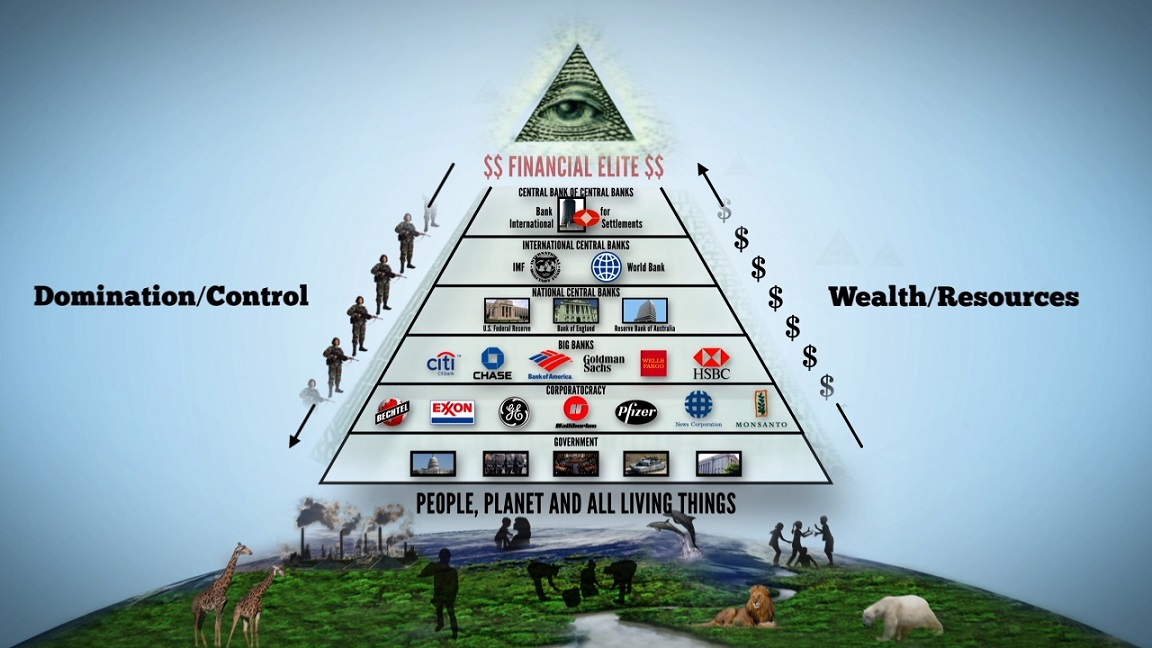
With each of the objects of inclusion being described not only in terms of separate but collective issue, this same formula for assessing the different social issues being protested about has not attracted the same level of scrutiny amongst the public. Whereas one person may be fully aware of a given issue that incorporates its own lineage of considerations such as in the case of plants and animals, the view as ideas as being different but related species that can be placed into a lineage has not been widely undertaken... particularly not in the arena of analyzing social systems as part of behavioral processes within a given environmental niche such as the planet amongst other planets in a galaxy amongst other galaxies. In other words, the multitude of social issues themselves are not likewise being collated into a similarly descriptive lineage such as the foregoing pyramid illustrates, and the several examples of different lineage below, as generalized specific views of a presumed evolutionary trek from simple to more complex developments:
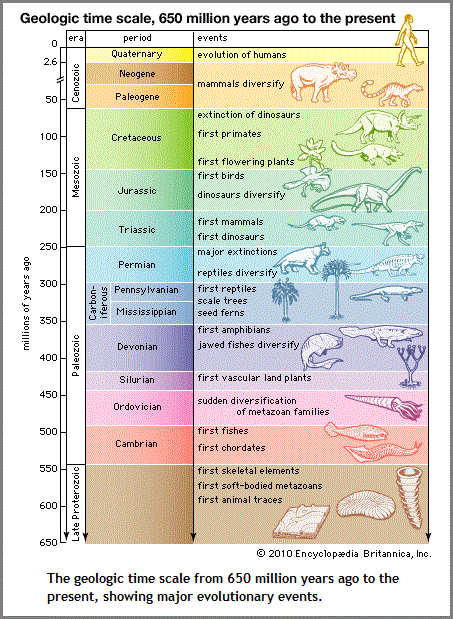 |
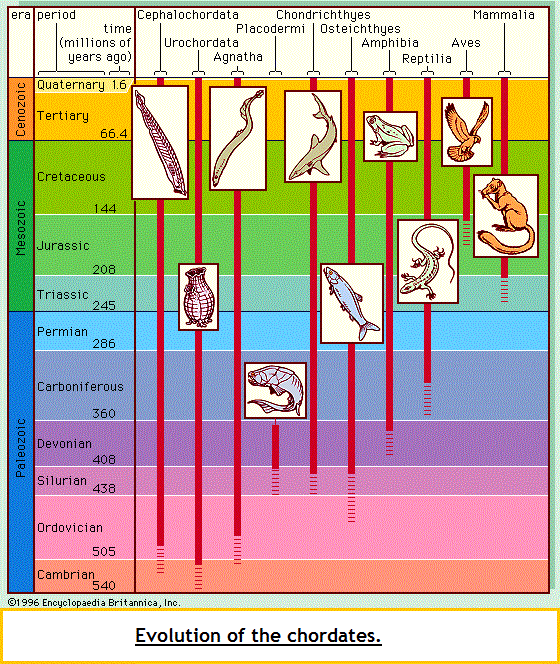 |
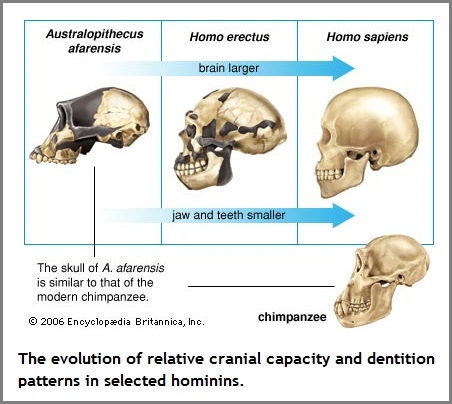 |
 |
 |
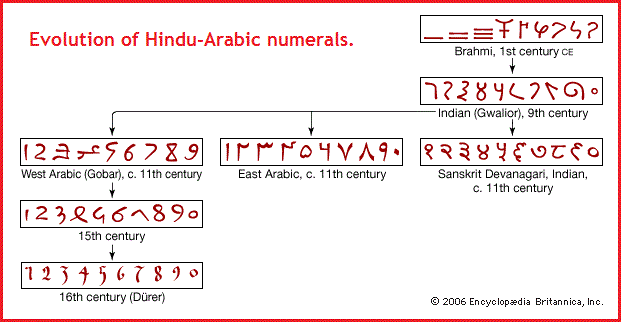 |
While there are various methodologies employed in the study of different subjects of major study areas such as Psychology, Biology, Philosophy, Sociology, Anthropology, etc... some of which have become sub-fields within these major study areas; apparently there are not that many protestors who attempt to apply one or another of the analytical models (as generalized tools) to our present concern of Sociology with respect to addressing the multiple social issues being brought. Instead, the major subject of "Sociology" as a presumed scientific approach for making improvement in society, has often been relegated into being a sub-field of the sub-fields themselves! Sociology is sometimes viewed as a type of tool box with little purpose then to house the sub-fields as specialized tools that have come to replace the crescent wrench that Sociology was initially fashioned as.
Let's take a short look at a tool concerned with biological species since Sociology is an extension of such a perspective from its own unique vantage point. Because an analysis of Sociology with respect to forms of government and their economic systems frequently entails an examination of their history in a human context, we can use the concept of "Phylogeny" (as well as Ontogeny, discussed awhile back on CCS page 11. However, it is of need for the reader to be given the heads-up that while they are reading the following information, it is necessary to make the connection to a Sociological context, because there are parallels to be made. (For example, as a simple statement well known, social thinking complexities today descended from earlier "ancestral forms" of simple social ideas.) Karl Marx and Engels' historical accounts are much too simplistic for our current needs. They did not go back far enough nor examine divergent but inter-connected "species" of ideas in different subject areas, though they can be forgiven because they did not have the type and amount of information we of today do. And though this was mentioned previously, it is of need to review for those whose attention span does not exceed the length of today's television shows or commercial advertisements. (We do not yet have a Darwinian "Evolution of Species" type of text applied to Sociology. We have just as much nonsense in our day with respect to Sociology as Darwin did with respect to Biological development. No current text approaches the study of Sociology as Darwin's idea did/does for Evolutionary theory. In other words, an "Evolutionary" perspective of Sociology has not been presented to the public.) Though the scientific study of biology is much older than the scientific study of Sociology, one might want to consider there are either more or a different kind of scientist that venture into these two arenas.
(Phylogeny is) the history of the evolution of a species or group, especially in reference to lines of descent and relationships among broad groups of organisms. Fundamental to phylogeny is the proposition, universally accepted in the scientific community, that plants or animals of different species descended from common ancestors. The evidence for such relationships, however, is nearly always incomplete, for the vast majority of species that have ever lived are extinct, and relatively few of their remains have been preserved in the fossil record. Most phylogenies therefore are hypotheses and are based on indirect evidence. Different phylogenies often emerge using the same evidence. Nevertheless, there is universal agreement that the tree of life is the result of organic descent from earlier ancestors and that true phylogenies are discoverable, at least in principle. Taxonomy, the science of classifying organisms, is based on phylogeny. Early taxonomic systems had no theoretical basis; organisms were grouped according to apparent similarity. Since the publication in 1859 of Charles Darwin's On the Origin of Species by Means of Natural Selection, however, taxonomy has been based on the accepted propositions of evolutionary descent and relationship. The data and conclusions of phylogeny show clearly that the tree of life is the product of a historical process of evolution and that degrees of resemblance within and between groups correspond to degrees of relationship by descent from common ancestors. A fully developed phylogeny is essential for the devising of a taxonomy that reflects the natural relationships within the world of living things. Evidence for specific phylogenies Biologists who postulate phylogenies derive their most useful evidence from the fields of paleontology, comparative anatomy, comparative embryology, and molecular genetics. Studies of the molecular structure of genes and of the geographic distribution of flora and fauna are also useful. The fossil record is often used to determine the phylogeny of groups containing hard body parts; it is also used to date divergence times of species in phylogenies that have been constructed on the basis of molecular evidence. 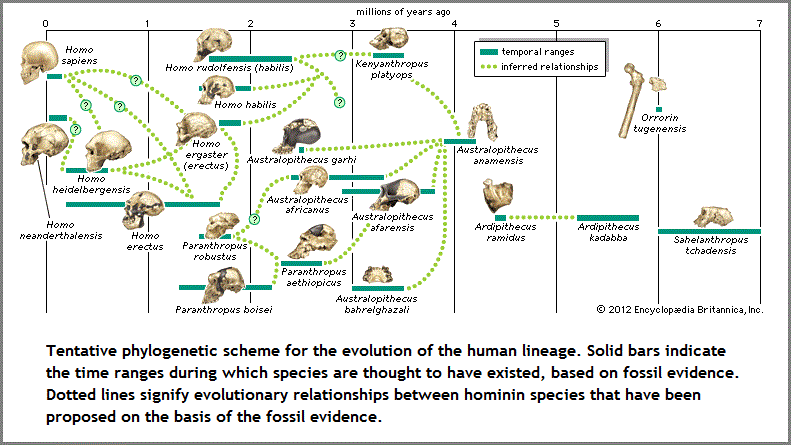 Most of the data used in making phylogenetic judgments have come from comparative anatomy and from embryology, although these are rapidly being surpassed by systems constructed using molecular data. In comparing features common to different species, anatomists try to distinguish between homologies, or similarities inherited from a common ancestor, and analogies, or similarities that arise in response to similar habits and living conditions. 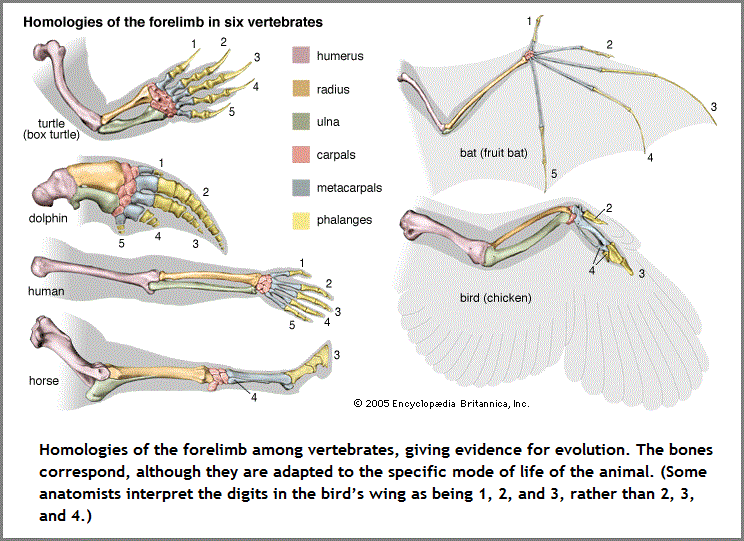 Biochemical investigations carried out in the latter half of the 20th century contributed valuable data to phylogenetic studies. By counting differences in the sequence of units that make up protein and deoxyribonucleic acid (DNA) molecules, researchers have devised a tool for measuring the degree to which different species have diverged since evolving from a common ancestor. Because mitochondrial DNA has very high mutation rates compared with nuclear DNA, it has been useful for establishing relationships among groups that have diverged recently. Essentially, the application of molecular genetics to systematics is similar to the use of radioisotopes in geologic dating: molecules change at different rates, with some, such as mitochondrial DNA, evolving rapidly and others, such as Ribosomal RNA, evolving slowly. An important assumption then in using molecules for phylogeny reconstruction is to select the appropriate gene for the age of the taxon under study. 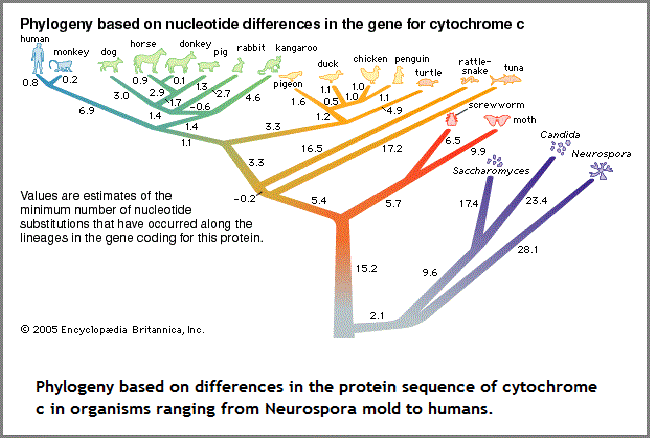 Phenetics versus Cladistics The methodology of phylogenetic work rests on two approaches: phenetics and phylogenetic systematics (cladistics). Phenetics bases classification strictly on similarities among organisms and emphasizes numerical analyses of an observed set of phenotypic characteristics. Cladistics bases classification of a group of species solely on their most recent common ancestor. Cladistics only uses shared derived characters—that is, select characteristics that infer monophyly or those that are expressed in all descendants of a common ancestor. The most direct difference between the two methods is that phenetics classifies species using as many characteristics as possible and arranges them by similarity regardless of any evolutionary relationships. Major evolutionary steps The phylogeny of life, as drawn from fossils and living species, indicates that the earliest organisms were probably the result of a long chemical evolution, in which random reactions in the primeval seas and atmosphere produced amino acids and then proteins. It is supposed that droplets containing proteins then formed membranes by binding molecules to their surface, and these membrane-bound proteins are said to have become organisms when they developed the capacity to reproduce. It is not certain whether these earliest self-reproducing organisms were proteins, nucleic acid–protein associations, or viruses. There is general agreement that they were heterotrophic organisms—i.e., those that required nourishment in the form of organic matter from early seas. Later, autotrophic forms appeared, having the ability to make their own food from inorganic matter. These organisms were the earliest bacteria; they could store energy as food and release energy as needed through respiration. 
Cyanobacteria (blue-green algae) are thought to have been the next evolutionary step in that they were able to use photosynthetic pigments to manufacture their own supply of food and therefore were not totally dependent on their environment for nutrients. After the cyanobacteria there appeared an extensive array of algae, molds, protozoans, plants, and animals. Three groups of algae can be dismissed with passing mention, as they arose from uncertain ancestors and have given rise to no further groups. These groups are the chrysophytes (golden algae, chiefly diatoms); the pyrrophytes (cryptomonads and dinoflagellates); and the rhodophytes (red algae). Three more groups have greater phylogenetic importance: the chlorophytes (green algae), which almost certainly gave rise to the land plants—i.e., the bryophytes (mosses and liverworts) and the tracheophytes, or vascular plants (including all the higher plants); the euglenoids (unicellular, flagellate organisms), which suggest a broad connection between plants and animals at this primitive level; and the phaeophytes (brown algae), which some biologists have considered to be a probable source of the animal kingdom. Finally, the protozoans were derived from unknown, more primitive ancestors, and one or more groups of protozoans have given rise to metazoans—i.e., multicellular animals. Evolution of land plants Land plants contain two major groups, bryophytes and tracheophytes, which differ in many ways but which share distinctive characteristics for adaptation to dry land. These include the housing of the plant embryo in maternal tissue. Bryophytes are descended from green algae and include mosses, liverworts, and hornworts. Only small quantities of water are needed for their reproduction, so that the sperm may travel to the eggs. The fertilized egg matures within the maternal tissue. The plant is protected from desiccation by a waxy cuticle. Bryophytes have apparently not advanced far beyond their algal predecessors and do not seem to be the evolutionary source of other groups. All the dominant plants on Earth are included in the tracheophytes. The tracheophytes' development of large plant bodies was made possible by vascular parts that carry water and food inside these plants and by a dominant sporophyte stage with a microscopic-sized gametophyte. Tracheophytes' tissues have differentiated into leaves, stems, and roots and, in the highest plants, into seeds and flowers. In explaining the evolution of tracheophytes, it has been suggested that a mutant form of green algae developed a primitive rootlike function with which to supply itself with water and minerals. The progeny of this organism eventually developed bundles of vascular tissues, a stem and leaves, and a cuticle for protection. The early vascular plants are called psilophytes. The development of seeds arose from the retention of the embryo inside maternal tissue. Early seed ferns gave rise to the gymnosperm group, including pines, spruces, and firs. Flowering plants, known as angiosperms, probably came from the gymnosperm phase and have two subgroups: the dicotyledons and the monocotyledons. Animal Evolution 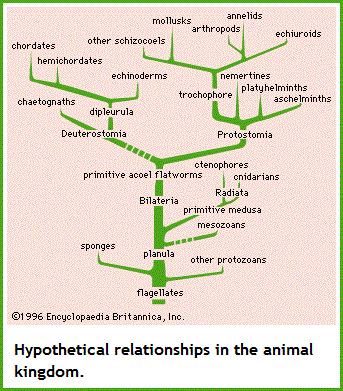
The problem of the origin of multicellular animals (metazoans) was long dominated by German embryologist Ernst Haeckel's theory that the original metazoan ancestor was a spherical protozoan that was structurally similar to the cnidarians (e.g., jellyfish, corals). Today there are two alternative explanations. The first traces metazoans back to flagellates, the presumed ancestors of flattened, ciliated animals (planulas) that eventually led to cnidarians, ctenophores, and flatworms. Another theory hypothesizes that multinucleated protozoans, dividing into subcells, were the original metazoans, which developed into simple flatworms. Fossil evidence of Ediacara fauna, dating from 630 to 542 million years ago, suggests that the earliest multicellular life originated from soft-bodied aquatic animals such as jellyfish and worms. Lower metazoan forms developed the first symmetrical arrangement of body parts about a main axis, thus establishing the bilateral symmetry that characterizes most animals; major exceptions are the echinoderms (e.g., starfish, sea cucumbers). The development of tissues into an outer ectoderm (providing protection and carrying sense apparatus), a middle mesoderm (muscle, cartilage, bone, and other supportive tissue), and an inner endoderm (serving digestion and reproduction needs) was an important phase. Another important trend was cephalization (head formation). The anterior end of the body generally holds the central nervous system, sense organs, and mouth. Two current theories postulate the lineage of the higher metazoans. The monophyletic sequence suggests that four groups evolved from lower forms to higher: Ameria (unsegmented animals), which includes flatworms, cnidarians, ctenophores, and mollusks; Polymeria (segmented animals), which includes annelids and arthropods; Oligomeria (reduced segmentation), which includes insects and echinoderms; and Chordonia (chordates), which includes all the vertebrates. The (alternative) diphyletic theory has been proposed by many zoologists. It contends that the higher metazoans had two lines of descent, one of which led to annelids, arthropods, and mollusks and the other of which led to echinoderms and chordates. Both groups emanated from an ancient flatworm. Humans are included in the chordates. Three basic structures are shared by all chordates: a dorsal nerve tube (brain and spinal cord in vertebrates); a notochord (supporting rod under the nerve tube); and a pharynx perforated by gill slits, at least during the embryonic stage. Source: "Phylogeny." Encyclopædia Britannica Ultimate Reference Suite, 2013. |
While the following is part of the above article, it has been removed in order to highlight its commentary with the intent that the reader view it in the context of applying it to Sociology... and in particular, the issue(s) of one's protest:
Applications of phylogeny
An exciting development in phylogenetics is the application of phylogenies to various modern problems.
- In medicine, phylogenies have been used to trace the origins and transmission rates of infectious diseases such as AIDS, influenza, and dengue.
- Phylogenies developed from molecular genetics have been particularly useful in conservation biology for identifying the evolutionary distinctiveness of endangered species, parentage in captive breeding programs, and levels of hybridization and inbreeding across species.
- Phylogenetic analyses have also been used as admissible evidence in criminal court cases involving the determination of purposeful viral transmission.
Such is the sojourn of our trek along the path in search of the development of a viable Cenocracy.
Page Initially Created: Tuesday, 06-Sep-2016... 04:25 AM
Page First posted: Wednesday, 07-Sep-2016... 09:56 AM
Updated Page: Sunday, 18-June-2017... 7:32 AM